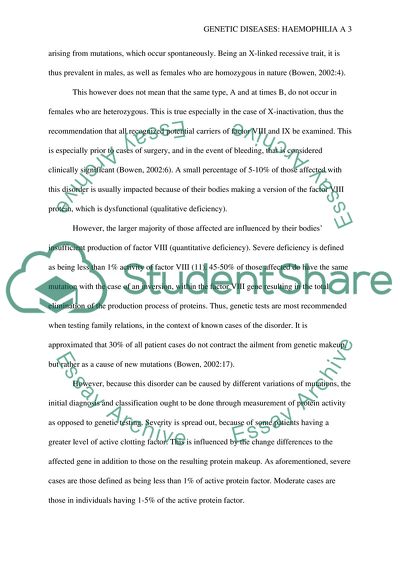Cite this document
(Genetic Diseases: Hemophilia A Essay Example | Topics and Well Written Essays - 1500 words - 1, n.d.)
Genetic Diseases: Hemophilia A Essay Example | Topics and Well Written Essays - 1500 words - 1. https://studentshare.org/biology/1817470-haemophilia-a
Genetic Diseases: Hemophilia A Essay Example | Topics and Well Written Essays - 1500 words - 1. https://studentshare.org/biology/1817470-haemophilia-a
(Genetic Diseases: Hemophilia A Essay Example | Topics and Well Written Essays - 1500 Words - 1)
Genetic Diseases: Hemophilia A Essay Example | Topics and Well Written Essays - 1500 Words - 1. https://studentshare.org/biology/1817470-haemophilia-a.
Genetic Diseases: Hemophilia A Essay Example | Topics and Well Written Essays - 1500 Words - 1. https://studentshare.org/biology/1817470-haemophilia-a.
“Genetic Diseases: Hemophilia A Essay Example | Topics and Well Written Essays - 1500 Words - 1”. https://studentshare.org/biology/1817470-haemophilia-a.


